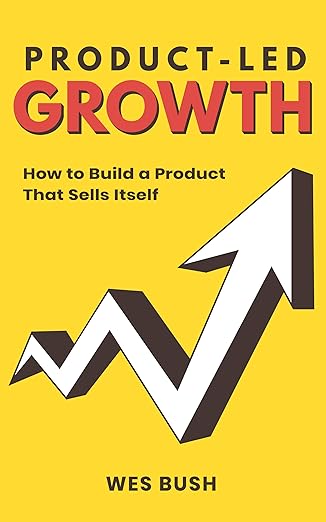Going Forward with Product-Led Growth

In recent times, Product-Led Growth (PLG) has rapidly become a hot topic in the startup world.
Unlike the traditional sales-driven approach, PLG is centered around the product. A standard sales-driven approach is encapsulated by THE MODEL, where the marketing team generates leads, the inside sales team turns these into prospects, and the closing team finalizes the deals.
I believe most Japanese companies are sales-driven. Many services hide their account registration links and pricing, relying on inquiry-based closures. The lack of visible pricing compels inquiries, which seems to work because all services follow this model.
Personally, I dislike this style, which is why I made microCMS open for anyone to register an account. We’ve continuously improved by getting feedback and iterating. As a result, we’ve been able to increase sales through inbound marketing alone.
However, as the company grew and sales needed to increase, our approach gradually shifted from product-centered to sales-centered. Following the typical Japanese SaaS model, our marketing team focused on increasing the number of discussions from requests for materials.
Development and Marketing Misalignment
We were in a tough situation. The marketing team was chasing numbers directly linked to MRR, like account numbers and sales discussions, while the development team focused on metrics that enhance customer satisfaction. This seemed like a good separation of KPIs at first, but we realized that striving for individual goals was hindering each other.
The marketing team’s requests for additional features to make selling easier were not enthusiastically received by the development team, as these didn’t directly impact their KPIs and there was no guarantee that marketing efforts would be successful. On the other hand, if sales didn’t increase, it was seen as the marketing team’s responsibility. This led to organizational silos.
Restructuring the Approach
Clearly, this was a distortion caused by our organizational structure, so we took the following steps:
- Stopped the sales-centered approach and pivoted back to a product-centered one.
- Set common goals for both development and marketing, rather than separate objectives.
- Held daily morning meetings with everyone, not just separate teams.
This unified the team, making us all move in the same direction. Deciding to focus on product-led growth again clarified our next steps.
On the day we made this decision, I learned via Twitter that the "Product-Led Growth Book" had been released (which was a surprise).
I believe the development team hasn’t changed much; they’ve always been focused on refining the product for the users. What has changed is the role of the marketing team. Previously focused on lead generation, they now essentially work to get as many engineers as possible to use our product, promoting what the development team has created.
The communication between development and marketing has improved significantly, thanks to daily company-wide morning meetings. This wouldn’t work with a larger team, but it's effective for now.
The second task is organizing information. We’re improving our website and documentation, collecting case studies, and more. There’s still a lot to do.
Implementing PLG
In PLG, the product itself also serves as a sales tool. We’re refining in-product onboarding, upselling, and cross-selling processes, aiming to increase revenue without needing sales personnel.
Pricing becomes crucial in PLG. You need to let users experience the product first, so freemium models, free trials, or a hybrid of these are essential. The key is identifying the right value metrics for your product, which will shape pricing, product metrics, and team composition.
For microCMS, we’re analyzing user data to determine our primary metric. It’s challenging with a headless CMS as there are various internal metrics to consider.
Once pricing is established, data analysis becomes vital. We’ll analyze in-product user behavior, activities, and drop-off points, ensuring they’re following the intended journey map. If they’re not deriving value or are stumbling, we need to guide them back on track.
There's a concept called the "Bowling Alley Framework," where you support users like the bumpers in a bowling alley to prevent the ball from falling into the gutter.
Product Bumpers
Essential in a product-led model, these help users adopt the product on their own.
Communication Bumpers
These enlighten users, nudging them toward app adoption or upgrading to paid versions.
If asked which bumper is more important, I’d say the product bumper. A useful product will naturally bring users back.
Important aspects of product bumpers include welcome messages, product tours, progress bars, checklists, onboarding tooltips, and empty states – all strategies to strengthen onboarding.
Key email strategies for communication bumpers are:
- Welcome emails
- Usage guide emails
- Sales touch emails
- Customer review emails
- Case study emails
- Better life emails
- Post-trial survey emails
- Expiration warning/trial extension emails
- Customer welcome emails
The timing of these emails is detailed in the PLG book. It’s best to automate these processes using marketing automation tools.
The most crucial aspect is minimizing churn. Increasing the customer retention rate by just 5% can boost sales by 25–95%. Given that microCMS has a relatively low churn rate, we aim to maintain and further reduce it.
Conclusion
As a service geared towards engineers, microCMS is well-suited for Product-Led Growth. We’ll focus on development and marketing to promote our improvements, enhance pricing and onboarding, and strengthen upselling.
If PLG fits well and starts to spin nicely, we might be able to break the myth that “small elite teams in SaaS are impossible.”















